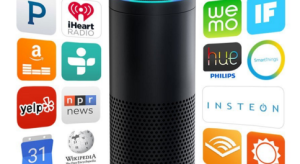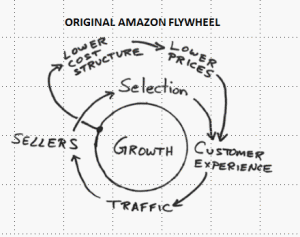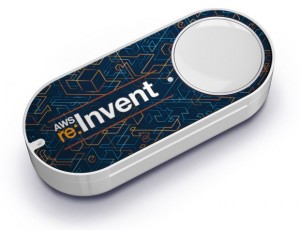I’ve been fixated recently on venerable manufacturing firms such as 169-yr. old Siemens making the IoT switch. Time to switch focus, and look at one of my fav pure-play IoT firms, Libelium. I think Libelium proves that smart IoT firms must, above all, remain nimble and flexible, by three interdependent strategies:
- avoiding picking winners among communications protocols and other standards.
- avoiding over-specialization.
- partnering instead of going it alone.
If you aren’t familiar with Libelium, it’s a Spanish company that recently turned 10 (my, how time flies!) in a category littered with failures that had interesting concepts but didn’t survive. Bright, young, CEO Alicia Asin, one of my favorite IoT thought leaders (and do-ers!) was recently named best manager of the year in the Aragón region in Spain. I sat down with her for a wide-ranging discussion when she recently visited the Hub of the Universe.
I’ve loved the company since its inception, particularly because it is active in so many sectors of the IoT, including logistics, industrial control, smart meters, home automation and a couple of my most favorite, agriculture (I have a weak spot for anything that combines “IoT” AND “precision”!) and smart cities. I asked Asin why the company hadn’t picked one of those verticals as its sole focus: “it was too risky to choose one market. That’s still the same: the IoT is still so fragmented in various verticals.”
The best illustration of the company’s strategy in action is its Waspmote sensor platform, which it calls the “most complete Internet of Things platform in the market with worldwide certifications.” It can monitor up to 120 sensors to cover hundreds of IoT applications in the wide range of markets Libelium serves with this diversified strategy, ranging from the environment to “smart” parking. The new versions of their sensors include actuators, to not simply report data, but also allow M2M control of devices such as irrigation valves, thermostats, illumination systems, motors and PLC’s. Equally important, because of the potentially high cost of having to replace the sensors, the new ones use extremely little power, so they can last .
Equally important as the company’s refusal to limit itself to a single vertical market is its commitment to open systems and multiple communications protocols, including LoRaWAN, SIGFOX, ZigBee and 4G — a total of 16 radio technologies. It also provides both open source SDK and APIs.
Why? As Asin told me:
“There is not going to be a standard. This (competiting standards and technology) is the new normal.
“I talk to some cities that want to become involved in smart cities, and they say we want to start working on this but we want to use the protocol that will be the winner.
“No one knows what will be the winner.
“We use things that are resilient. We install all the agents — if you aren’t happy with one, you just open the interface and change it. You don’t have to uninstall anything. What if one of these companies increases their prices to heaven, or you are not happy with the coverage, or the company disappears? We allow you to have all your options open.
“The problem is that this (not picking a standard) is a new message, and people don’t like to listen. This is how we interpret the future.”
Libelium makes 110 different plug and play sensors (or as they call them, “Plug and Sense,” to detect a wide range of data from sources including gases, events, parking, energy use, agriculture, and water. They claim the lowest power consumption in the industry, leading to longer life and lower maintenance and operating costs.
Finally, the company doesn’t try to do everything itself: Libelium has a large and growing partner network (or ecosystem, as it calls it — music to the ears of someone who believes in looking to nature for profitable business inspiration). Carrying the collaboration theme even farther, they’ve created an “IoT Marketplace,” where pre-assembled device combinations from Libelium and partners can be purchased to meet the specific needs of niches such as e-health, vineyards, water quality, smart factories, and smart parking. As the company says, “the lack of integrated solutions from hardware to application level is a barrier for fast adoption,” and the kits take away that barrier.
I can’t stress it enough: for IoT startups that aren’t totally focused on a single niche (a high-stakes strategy), Libelium offers a great model because of its flexibility, agnostic view of standards, diversification among a variety of niches, and eagerness to collaborate with other vendors.
BTW: Asin is particularly proud of the company’s newest offering, My Signals,which debuted in October and has already won several awards. She told me that they hope the device will allow delivering Tier 1 medical care to billions of underserved people worldwide who live in rural areas with little access to hospitals. It combines 15 different sensors measuring the most important body parameters that would ordinarily be measured in a hospital, including ECG, glucose, airflow, pulse, oxygen in
It combines 15 different sensors measuring the most important body parameters that would ordinarily be measured in a hospital, including ECG, glucose, airflow, pulse, blood oxygen, and blood pressure. The data is encrypted and sent to the Libelium Cloud in real-time to be visualized on the user’s private account.
It fits in a small suitcase and costs less than 1/100th the amount of a traditional Emergency Observation Unit.
The kit was created to make it possible for m-health developers to create prototypes cheaply and quickly.






